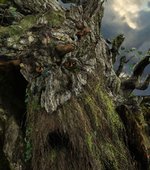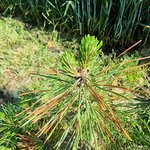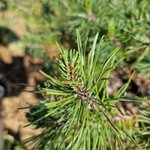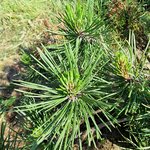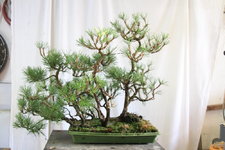Pines get sick because of shitty horticulture in the soil, lack of sun, and overwork/mistreatment, not because there merely exists a pathogen nearby. The atmosphere and soil in rural settings is an absolute soup of pathogens, so if the fear is that this tree will sicken every tree in the area, even across a large field on OP's property, then we're sort of cynically assuming that
@bonsai-max sucks at horticulture and can never get better at it. But what if we weren't so fatalistic? Getting good at pine horticulture is going to be a minimum requirement for continuing in pine bonsai at all, you can't muscle your way through this with spraying and praying.
@bonsai-max , pines are happy or become more happy, whether currently sick or not, when pine horticulture is observed religiously, i.e:
- The root system is in pumice or a similar particle
- The root system breathes air and is allowed to dry out at the edges of the soil volume between waterings.
- The root system is confined by a pot not much bigger than the root system's current volume.
- The soil is not composed of heterogenous distribution of soil types (hard to avoid in yamadori/yard finds but eventually, get to this state ASAP)
- The canopy is kept in full direct sun, full means full, direct means direct. The brighter the better
- The pine is allowed to grow long, strong, bushy surplus growth, and that surplus growth is kept long enough to then return a net-positive investment back to the rest of the tree in the form of stored sugars. Again and again, year after year
- The soil surface is kept diligently clean of fine particles, weeds, mosses, algae, liverwort + other worts
Structurally, IMO at the very least before looking closer, you have a foresty clump if not necessarily a singular tree. I would set aside ideas about trunk fusion and develop it as a clump, for better or worse.
Side note, yes, OP is in mugo-native lands so that slaps down the non-native argument, but that's irrelevant anyway, because the only thing that actually matters (assuming temperate climate) is pine horticulture as stated above. Mugo isn't native in Oregon either, and Oregon really doesn't resemble Switzerland at all. And yet, literally hundreds of thousands of very healthy mugos (possibly millions of them) are grown in Oregon every year and shipped all over the US and Canada. Satisfy the horticultural contracts demanded by the pine and nothing else matters.

